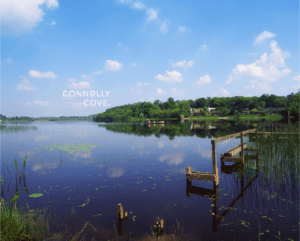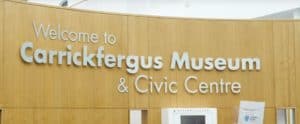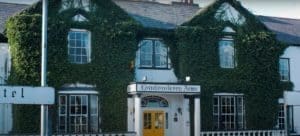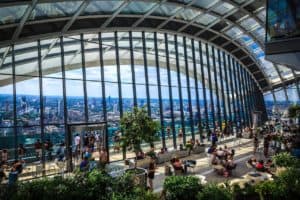Irish Tales of the Otherworld and Parallel Traditions

Updated On: April 21, 2024 by Maha Yassin
Venturing into the realm of the Irish Otherworld is akin to peering through a mystical veil that separates our reality from a world brimming with enchantment and timeless legends. Throughout Ireland’s history, tales of this parallel plane have captivated the imagination with stories of gods, spirits, and ethereal beings. It’s an intricate tapestry woven from the very fabric of Gaelic culture, offering glimpses into a universe where the mundane meets the magical.
This Otherworld isn’t just a mere backdrop for Ireland’s folklore; it’s a foundational element of Celtic mythology that has evolved and intertwined with the nation’s identity. At the heart of many Irish tales, we find this enigmatic Otherworld, a place thought to exist alongside our own, yet it remains elusive, shrouded in mystery and symbolism. The Celts envisioned it as a place free from the woes of mortal life—ageing, sickness, and sorrow were unknown. It was a land of eternal youth, abundant feasts, and perpetual happiness, often depicted as islands or hidden realms deep within the Earth.
As we explore the Otherworld’s presence in Irish mythology, its significance becomes clearer—serving as a stage for heroic quests, a sanctuary for legendary gods, and a source of wisdom and prophecy. Our journey uncovers how these stories have sculpted Ireland’s cultural heritage, echoing through time in its festivals, arts, and landscape.
Origins and Evolution of Irish Otherworld Beliefs

In this section, we’ll explore how the beliefs surrounding the Irish Otherworld have developed from ancient times through various cultural shifts, including the influence of Christianity and the Gaelic Revival, to contemporary understanding and comparative mythology.
Early Irish Myths and Sagas
The earliest glimpses into the Irish Otherworld are found in early Irish myths and sagas. Rooted in an oral tradition, these stories were later compiled in medieval manuscripts like the Lebor Gabála Érenn. Druids and pagan practices feature prominently, representing a world where gods and mortal realms interweave. Our understanding of these tales relies heavily on the literate class of Christian monks, who ensured their preservation.
Christian Influence on Pagan Lore
As Christianity spread, it became an important influence on Celtic religion. Non-Christian entities and beliefs were often reframed within a Christian context or adapted to align with Christian teachings. This transformation paved the way for syncretism, where pagan symbols were integrated into a Christian narrative, redefining traditional myths and the conceptualisation of the Otherworld.
The Gaelic Revival and Modern Interpretations
During the Gaelic Revival of the 19th and 20th centuries, a renewed interest in Gaelic culture encouraged scholars to revisit ancient texts and oral stories, leading to a resurgence in the national consciousness. This period witnessed a reconstruction and romanticisation of the past, with literacy in the vernacular enabling a broader appreciation of Ireland’s mythological heritage.
Comparative Mythology
When examining the Irish Otherworld in the broader context of Celtic mythology, parallels with Brittonic myth and Welsh mythology become apparent. These stories of crossing to enchanted realms echo through the Celtic lands and reflect a widespread tradition in human storytelling, highlighting shared motifs in our quests for realms beyond our own.
Defining the Irish Otherworld
This section explores the mystical realm of the Irish Otherworld, a central element in Ireland’s mythological landscape. We discuss its unique characteristics, the entities that dwell within it, its significant locations, and how it compares to similar concepts in other cultures.
Characteristics of the Otherworld
The Irish Otherworld is a place believed to exist parallel to our own, a supernatural realm intertwined with the Irish landscape. It’s a place of beauty, health, and abundance, often associated with everlasting youth. Ancient texts describe it as a land where sickness and death are non-existent, and feasts and celebrations are perpetual. It frequently manifests in the landscape through natural features such as lakes, caves, and man-made structures like portal tombs.
Roles of Otherworldly Entities
The dwellers of the Otherworld, collectively known as the Aos Sí or sídhe, are often considered fairies or deities. They possess various roles, from guardians of the natural world to ancestors maintaining a connection with the living. Entities like the banshee foretell imminent death, while others like those residing at Cnoc Meadha or Brú na Bóinne (Newgrange) protect sacred sites and gatekeepers to the Otherworld.
Significant Otherworldly Locations
Ireland teems with locations imbued with otherworldly significance. Brú na Bóinne is one of the most iconic, linked to stories of the supernatural and famed for its astronomical alignment during the winter solstice. Similarly, Cnoc Meadha is a hill associated with the sídhe and legendary figures. In mythology, places like Tír na nÓg and Mag Mell evoke a paradise of eternal youth and happiness. Avalon and Annwn represent parallel concepts in Arthurian and Welsh legends, respectively.
Comparisons with Parallel Traditions
The Irish Otherworld shares similarities with the concept of a parallel world in various cultures. For instance, Annwn, in Welsh tradition, mirrors the Irish Otherworld as a mystical place that exists alongside our own. Avalon from Arthurian lore is akin to Tír na nÓg, serving as a mythical island where heroes and beings of power reside. These parallels illustrate how the idea of another world is a universal theme, although the nature, inhabitants, and functions may differ across traditions.
Celtic Festivals and Liminal Times
The Celtic calendar is marked by festivals that are not just celebrations but also signify moments when the boundary between our world and the Otherworld is believed to be at its thinnest.
Samhain: Thinning of the Veil
Samhain, observed from sunset on 31 October until sunset on 1 November, is when the veil between worlds is said to be most permeable. This festival marks the end of the harvest season and the beginning of winter. During Samhain, it was believed that the spirits and faeries could easily traverse between the two realms.
Beltane and Other Seasonal Festivals
Beltane celebrated on 1 May, is another significant cross-quarter day where the light is honoured, marking the onset of summer. Similar to Samhain, Beltane is a time for contact with the Otherworld. Other festivals include Imbolc, signalling the beginning of spring, and Lughnasadh, denoting the start of the harvest season.
Liminal Spaces in Irish Folklore
In Irish folklore, places such as holy wells, fairy forts, stone circles, and specific rocks, like Bulla rock, are considered liminal or “thin” places where the Otherworld is closer. These sites are often the focus of rituals during these festivals, where the presence of the supernatural is more palpable.
Irish Tales and the Otherworld
In exploring the rich tapestry of Irish mythology, we enter a realm where legendary heroes embark on epic quests and supernatural beings weave the fabric of sovereignty myths. These stories, deeply ingrained in our culture, are gateways to understanding the past and the paradigms that have shaped our storytelling traditions.
Legendary Heroes and Their Journeys
Irish mythology celebrates numerous heroes, each undertaking momentous journeys that often lead them to the mystical Otherworld. Fionn mac Cumhaill, for instance, is not just a warrior but a figure whose adventures echo the wider cosmology of our ancestors. His encounters are more than battles; they are profound interactions with the supernatural.
Otherworld Women and Sovereignty Myths
The figure of the Otherworld woman in Irish tales often symbolises the land and sovereignty itself. Characters such as the Morrígan or Queen Medb in the Ulster Cycle stand as metaphors for the power and fate of the kingdom. These myths illuminate the integral role of women within our cultural lore, portraying them as both benefactors and challengers to the heroes of the age.
The Otherworld in Irish Saga and Epic
Our sagas and epics, including the Táin Bó Cúailnge, are replete with references to the Otherworld. Lugh, a prominent figure with a mastery of all arts, embodies the bridge between our world and that enigmatic realm. His story and other tales convey the Otherworld’s proximity, accessible through raths, sidhe mounds, or reflective surfaces like water.
The Oral Tradition and Storytelling
The vitality of Irish myths and tales owes much to the oral tradition. Long before the written word, songs and spoken narratives passed from generation to generation, encoding wisdom, entertainment, and communal values. This oral culture ensured the survival of encounters with supernatural beings and heroes, allowing such narratives to thrive today.
By examining these aspects of our myths, we deepen our appreciation for their enduring legacy and ongoing influence on Irish culture.
The Cultural Context of Irish Otherworld Legends
Irish Otherworld legends are a captivating tapestry of beliefs that reflect our understanding of life, death, and the realms beyond our physical world. These stories are deeply rooted in Irish tradition and offer a unique insight into societal values and historical interpretations.
Societal Views on Death and the Afterlife
In Ireland, death and the afterlife have always been intertwined with our cultural fabric. Our ancestors believed profoundly that the souls of the dead transitioned to another existence, often called the Otherworld. This is a place beyond the physical realm, where deities like the Tuatha Dé Danann and figures like the Morrígan from Irish mythology dwell. The house of Donn, often considered the Irish god of the dead, plays a significant part in these narratives, symbolising the destination of souls upon death. Such legends are not merely tales; they reflect our attempts to understand and articulate the journey after life.
The Role of Mythology in Understanding History
Mythology is a valuable lens through which we view and interpret our history. The Druids, renowned for their wisdom, often feature prominently in our accounts of the past, emphasising their influence on Irish culture and religious practices. Through the myths and stories passed down through generations, we can glean insights into the values, challenges, and beliefs that shaped our ancestors’ lives. Accounts of revered gods and deities, such as those found among the Tuatha Dé Danann, are more than mere myths; they are a cultural bridge that connects us to a rich heritage, informing our understanding of historical events and societal advances.
The Natural World and Otherworld Connections

In exploring Irish mythology, one cannot overlook the intrinsic links between the natural world and the Otherworld, a realm intertwined with our physical landscape. These connections are woven deeply into the cultural fabric, illustrating the Gaelic reverence for sacred spaces and the creatures that inhabit them.
Sacred Landscape and Natural Features
Ireland’s landscape is dotted with burial mounds and poetic trees, each believed to have a foot in our world and a root in the Otherworld. The Ceide Fields are a testament to the ancient Gaels‘ communion with these realms. Similarly, pools and bodies of water often served as gateways to the Otherworld, with the western sea being a recurrent motif in tales of the daoine sí, a supernatural race akin to fairies.
Flora and Fauna in Irish Mythology
Trees such as the ash, oak, and yew hold significant roles within Irish mythology, often anchoring sacred sites where the veil between worlds is thinnest. Animals, too, are pivotal, with creatures like salmon, horses, and birds frequently representing Otherworldly guides or divine messengers to the Gaels and those attuned to the spiritual landscape of Ireland.
Exploring Otherworldly Encounters
Our journey through the realm of Irish folklore reveals a tapestry rich with otherworldly encounters, where supernatural beings interact with humanity, hidden portals offer passage to realms untold, and tales of joy and terror have shaped a nation’s narrative.
Supernatural Beings and Human Interactions
In the intricate dance of supernatural beings and human encounters, the banshee’s wail is a sorrowful prelude to death. These ethereal entities of Irish lore, often cloaked in a grey shroud, serve as messengers from the Otherworld, their cries a harbinger of impending loss. Such encounters, deeply woven into the fabric of Irish culture, resonate with the power of the oral tradition.
Portals to the Otherworld
Legends speak of portals to the Otherworld in the breathtaking Irish landscape. It’s said that landmarks, such as the Bullaun stones or mystical lakes, serve as thresholds to these unseen realms. The infamous Bulla Rock, for instance, is often surrounded by tales of supernatural change, inviting the curious to wonder and wander between worlds.
Visions of Joy and Terror
The Irish Otherworld is not solely a place of fear; it’s depicted as a domain where eternal joy can be found. This duality of visions—some of joy, others of terror—has imprinted itself on the Irish psyche, embodying the complex nature of existing between these parallel realities. Yet, amidst this spectrum, the Otherworld remains a mirror to our own, reflecting our deepest hopes and darkest nightmares.
The Everlasting Influence of Otherworldly Tales
Through centuries, the everlasting influence of otherworldly tales has stamped its mark on Ireland’s cultural identity. These narratives continue to inspire literature, art, and cinema, transcending the boundaries of Ireland to capture imaginations worldwide. The Otherworld—with its legends of the dead and ageless lore—remains a testament to the enduring legacy of Ireland‘s narrative tradition.
Representations of the Otherworld in the Arts
Exploring the enchanting theme of the Otherworld, we discover various art forms that eloquently capture its essence. This mystical concept has been a source of inspiration across multiple domains within the arts, from musical compositions to evocative storytelling and striking visual representations.
The Otherworld in Irish Music and Song
The lyrical landscape of Irish music is deeply imbued with references to the Otherworld. Musicians often have woven tales of this ethereal realm in traditional folk tunes and ballads. For instance, the celebrated song She Moved Through the Fair encapsulates the supernatural encounter with love from the Otherworld, embodying the thin veil that separates it from our reality. Irish music’s otherworldly aspects are not confined to its lyrics; the melodies, often played on harps and tin whistles, seem to transport the listener to this parallel landscape of imagination and folklore.
Literary Depictions of the Irish Otherworld
Irish literature brims with references to the Otherworld, with the Lebor Gabála Érenn or “The Book of Invasions” articulating a vivid mystique of an Irish ancestral past intertwined with Otherworldly elements. Poets and writers have drawn upon this font of mythology, whether it’s W.B. Yeats with his allusions to ancestral voices in works like “The Celtic Twilight” or contemporary authors who continue to rekindle the mystical fires of ancient traditions in their narratives.
Visual Arts and Symbolism
Visual arts also play a significant role in depicting the Irish Otherworld. Artists interpret this mysterious domain through mediums ranging from painting to sculpture. Symbols such as the spirals found at Newgrange or the intricate knotwork in Celtic art are often attributed with Otherworldly significance. These motifs serve as visual portals through which we glimpse the profound and continuous influence of the Otherworld on Irish culture and arts.
The Future of Otherworld Legends in Irish Culture
The pulse of Irish mythology vibrates with tales of the Otherworld—a realm parallel to our own, brimming with deities, spirits, and unearthly beauty. As we venture into the future, the reverence and curiosity for these Otherworld legends remain firmly interwoven with Irish culture.
Scholars and enthusiasts continue to seek an understanding of these ethereal narratives in contemporary society. A resurgence in the study of ancient mythologies places Irish legends at the forefront of cultural discussion:
- The academic examination of the Otherworld provides deeper layers of interpretation.
- Technology grants innovative ways to preserve and share these timeless stories.
- Multimedia platforms offer interactive experiences to engage with these tales.
With the advent of online resources, entities like Connolly Cove have become vital in promoting Irish culture to a global audience. They aid in not only preserving Otherworld legends but also in evolving them for future generations to cherish.
Scholars and storytellers play a crucial role in keeping the spirit of the Otherworld alive. Their work ensures that such integral parts of our heritage remain relevant:
- Through conferences and publications, scholars disseminate new interpretations.
- Local tales are perpetuated through festivals and cultural events.
We anticipate that Irish Otherworld legends will continue to thrive, embracing modern mediums while honouring their mystical roots. These narratives are a fundamental component of Irish identity, and we remain committed to their stewardship for posterity.
FAQs
This section explores some of the most common inquiries surrounding the enchanting and mystical narratives that form the core of Irish folklore and mythology.
What constitutes the Irish Otherworld according to folklore?
As folklore describes, the Irish Otherworld is a realm existing alongside our own but invisible to the human eye, populated by various deities, spirits, and the deceased. It’s a place free from the mortal constraints of age and illness, often depicted as idyllic islands or hidden underground domains.
Which literary tradition encompasses stories of mythological beings and legendary heroes in Ireland?
The Irish mythological cycle is the literary tradition that encompasses the illustrious tales of mythological beings and legendary heroes. These narratives form a significant part of early Irish literature, preserving the rich storytelling traditions of the Celts.
Under what genre do classic Irish narratives typically fall?
Classic Irish narratives typically fall under the genre of mythology and folklore. They serve as a foundation for Ireland’s profound literary history, blending the mystical and the historical in a tapestry of epic stories and cultural heritage.
Who are some of the prominent figures in stories of the Irish Otherworld?
Prominent figures in stories of the Irish Otherworld include a variety of gods and heroes, such as the Dagda, Morrígan, and Lugh from the pantheon of deities, and legendary heroes like Cú Chulainn and Fionn mac Cumhaill from the Ulster and Fenian cycles of Irish mythology.
How do Irish tales depict the interaction between mortals and the supernatural?
Irish tales often depict interactions between mortals and the supernatural as momentous events that are both enchanting and dangerous. Mortals might gain wisdom or face tribulations through encounters with supernatural entities, and such crossings between worlds teach moral lessons or explain the mysteries of the universe.
What are the common themes explored in Irish mythological tales?
Common themes in Irish mythological tales include the nature of heroism, the power of fate, the significance of honour and loyalty, and the perpetual struggle between forces of order and chaos. These stories often ponder the connection between our world and the realms beyond, reflecting the innate human fascination with the unknown.






